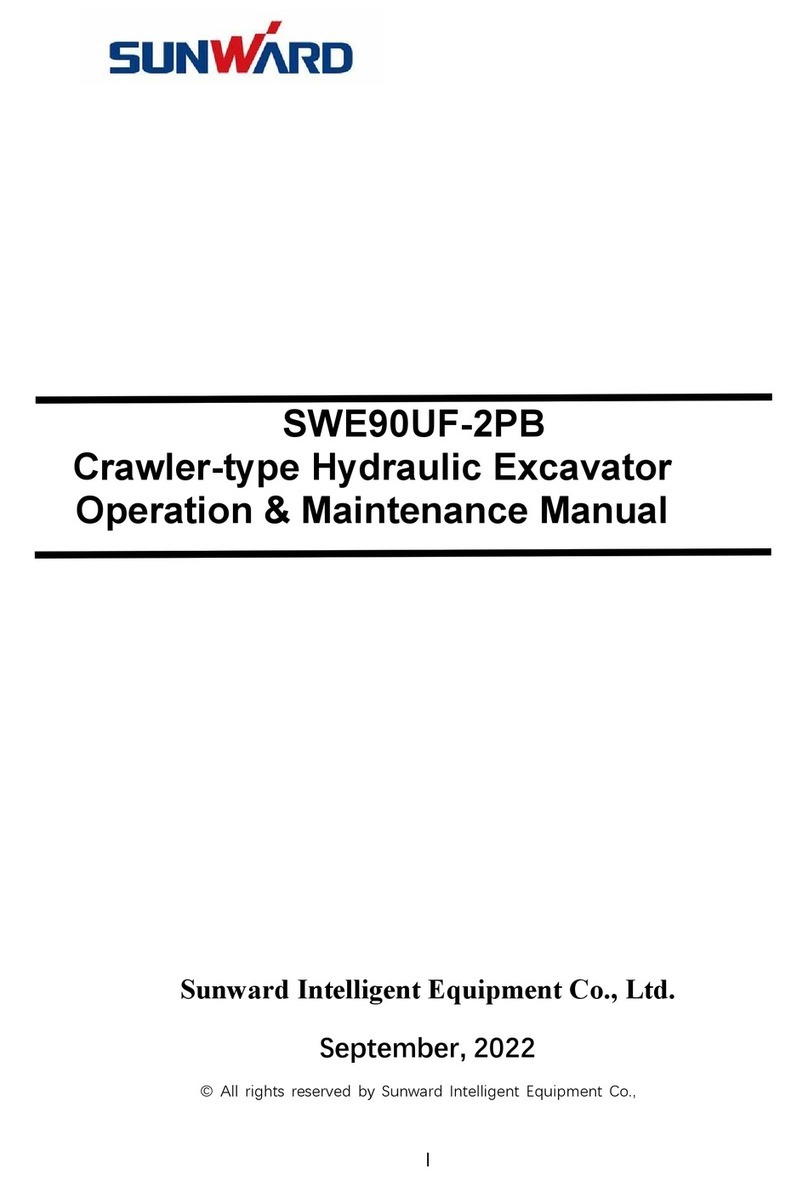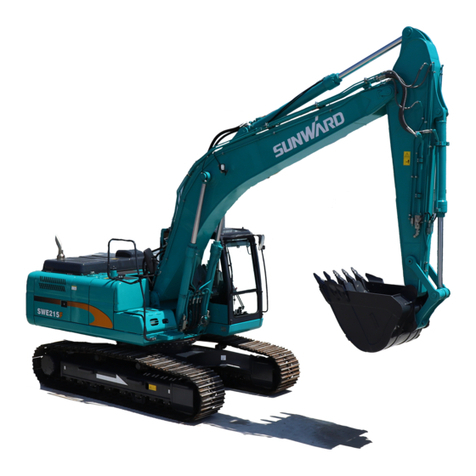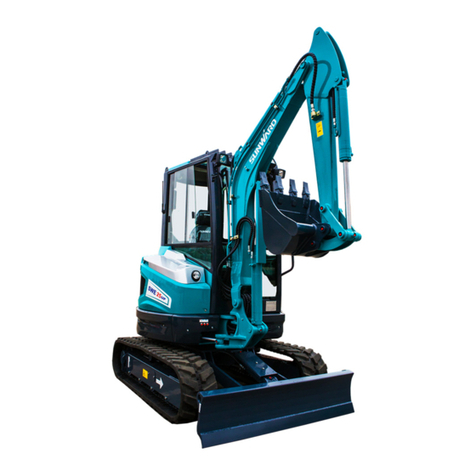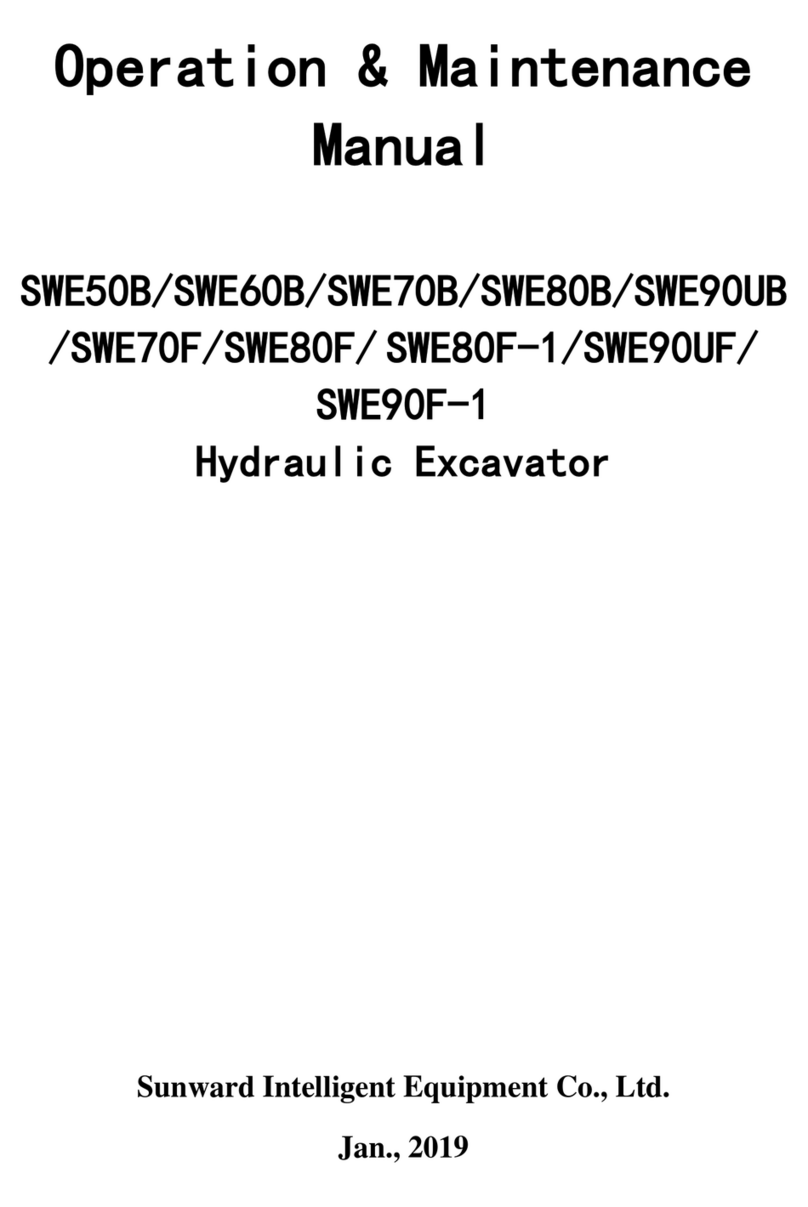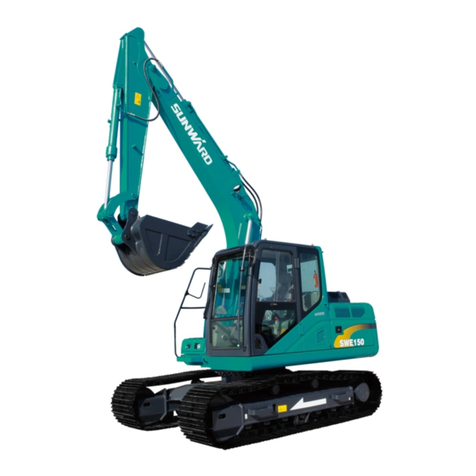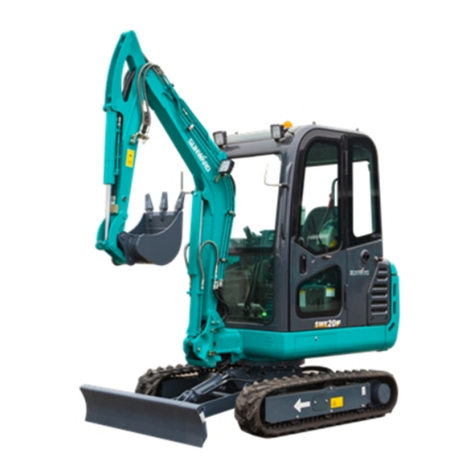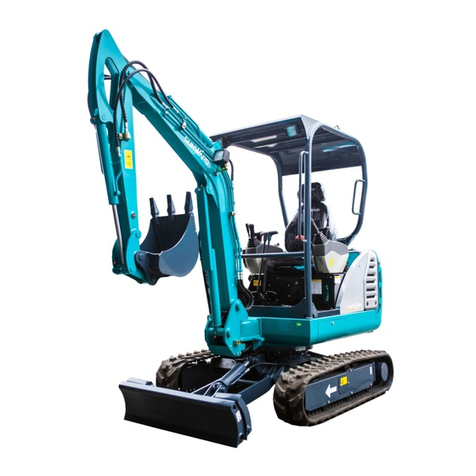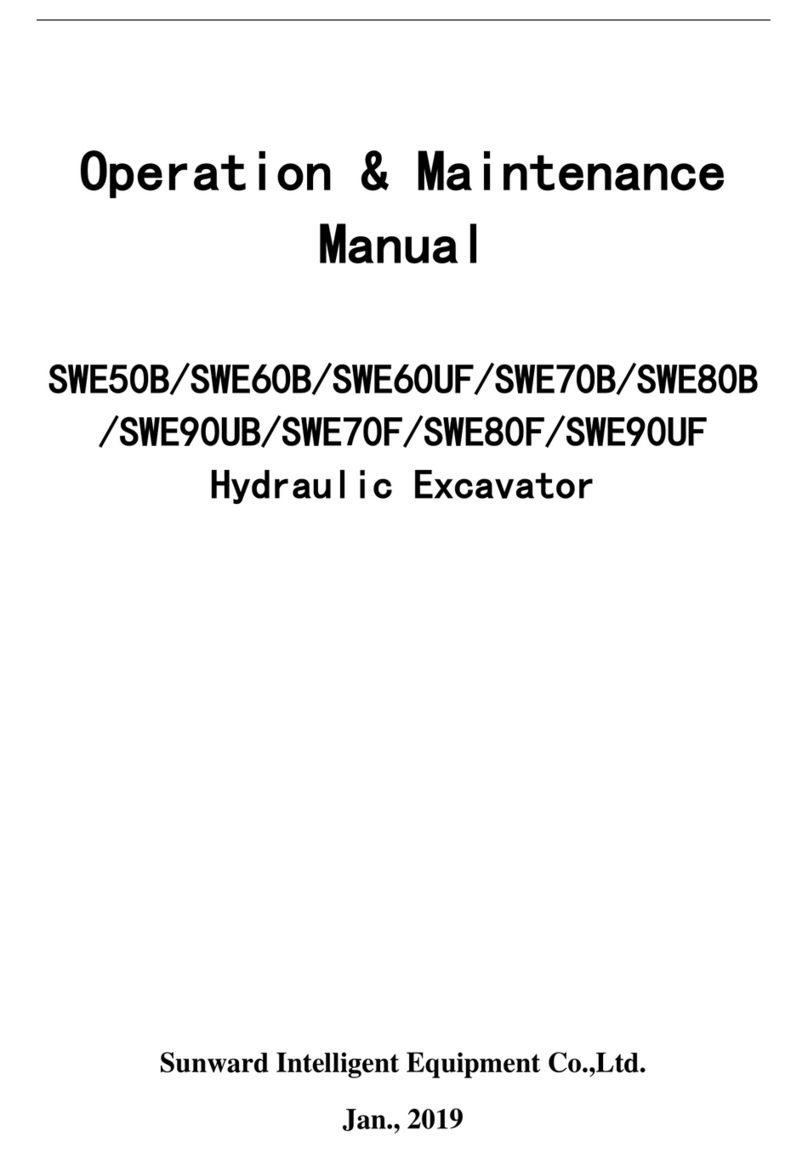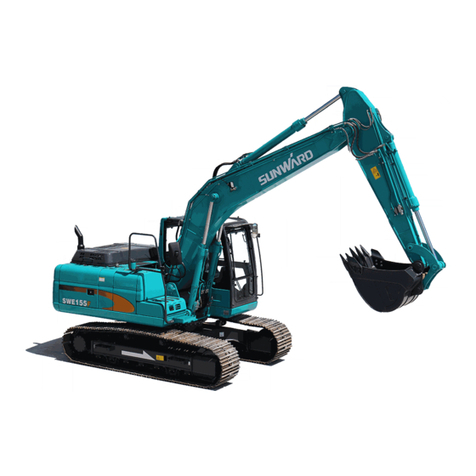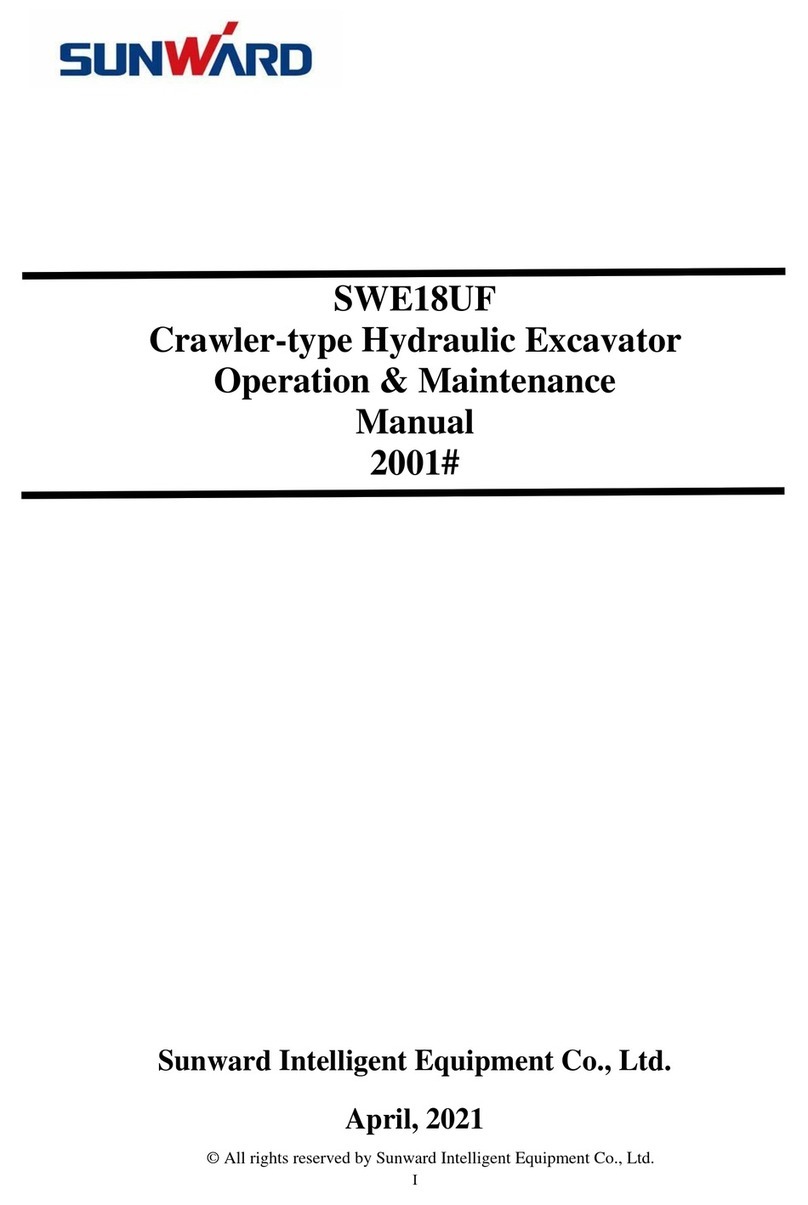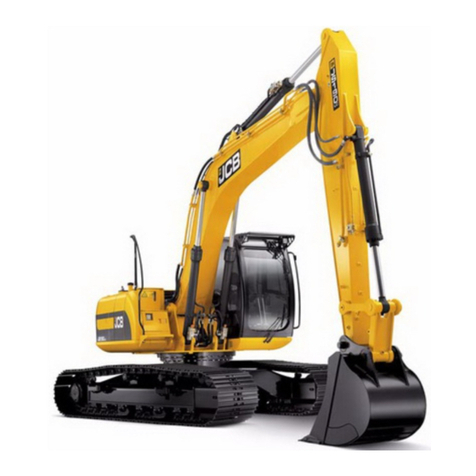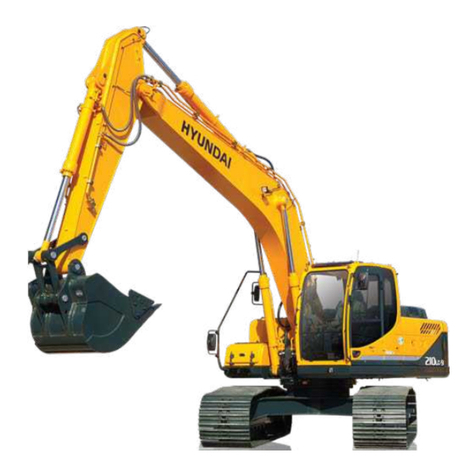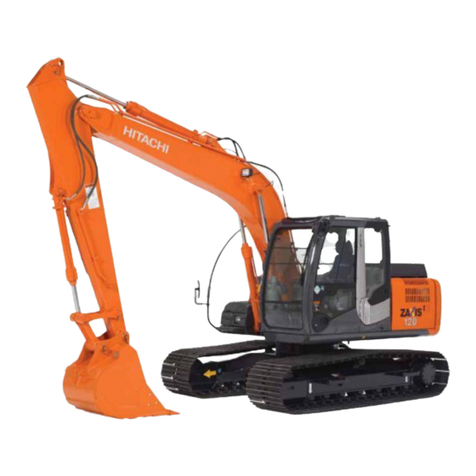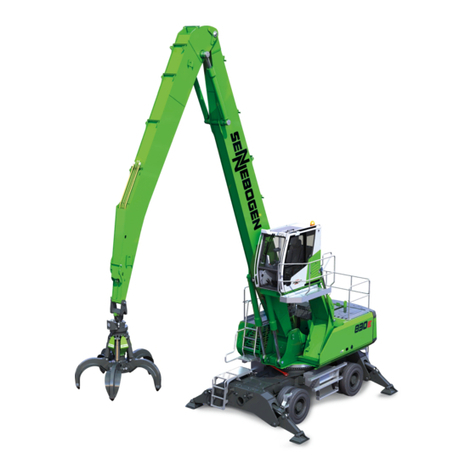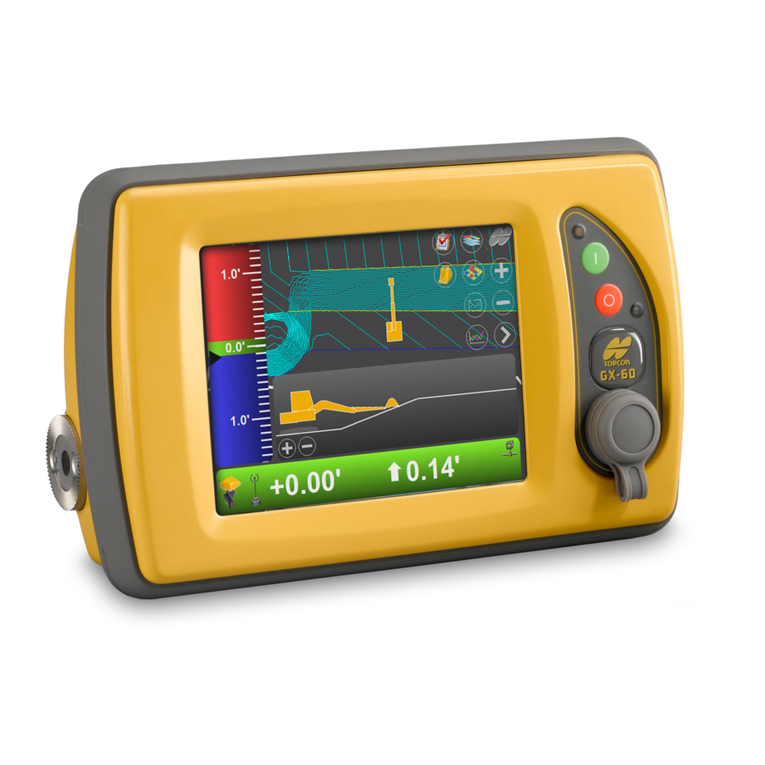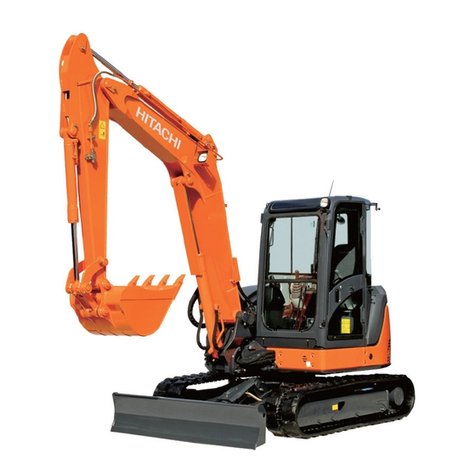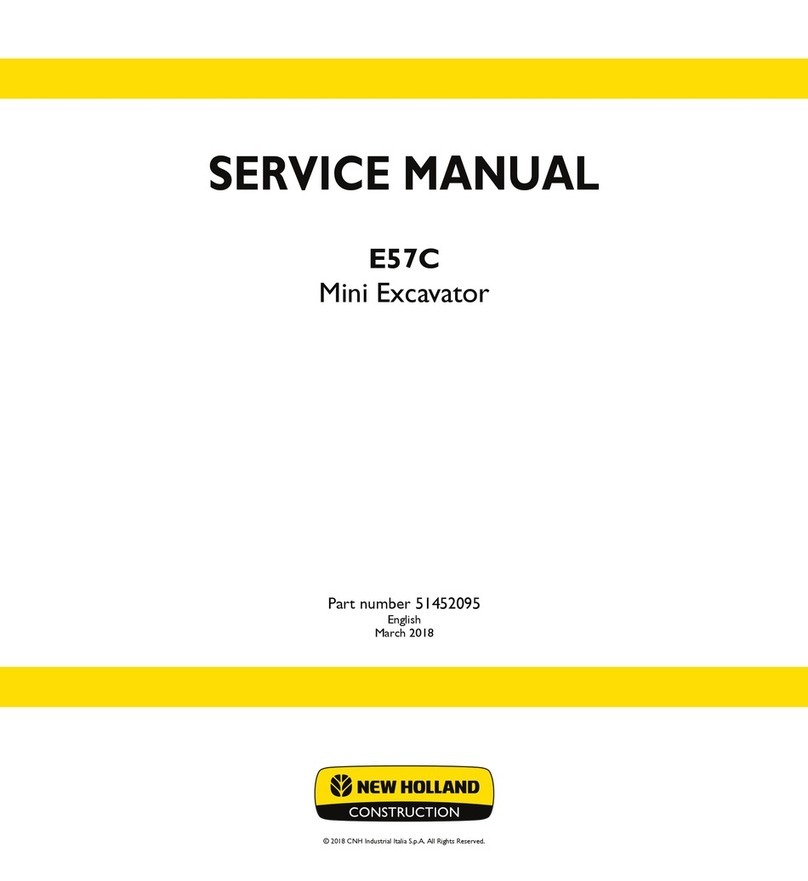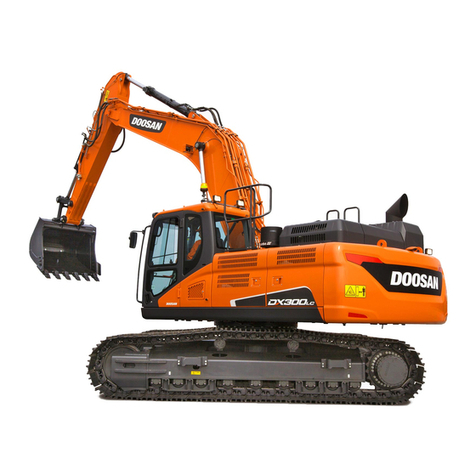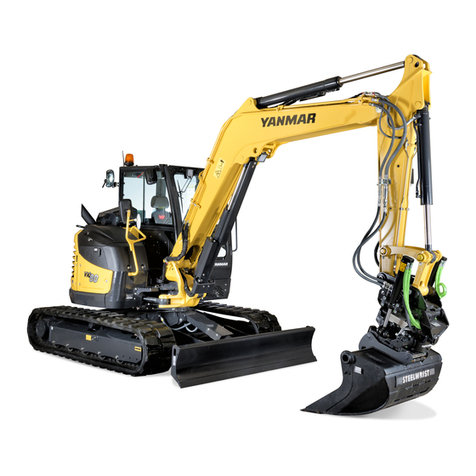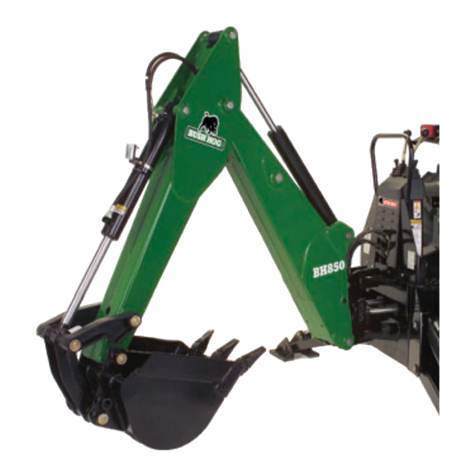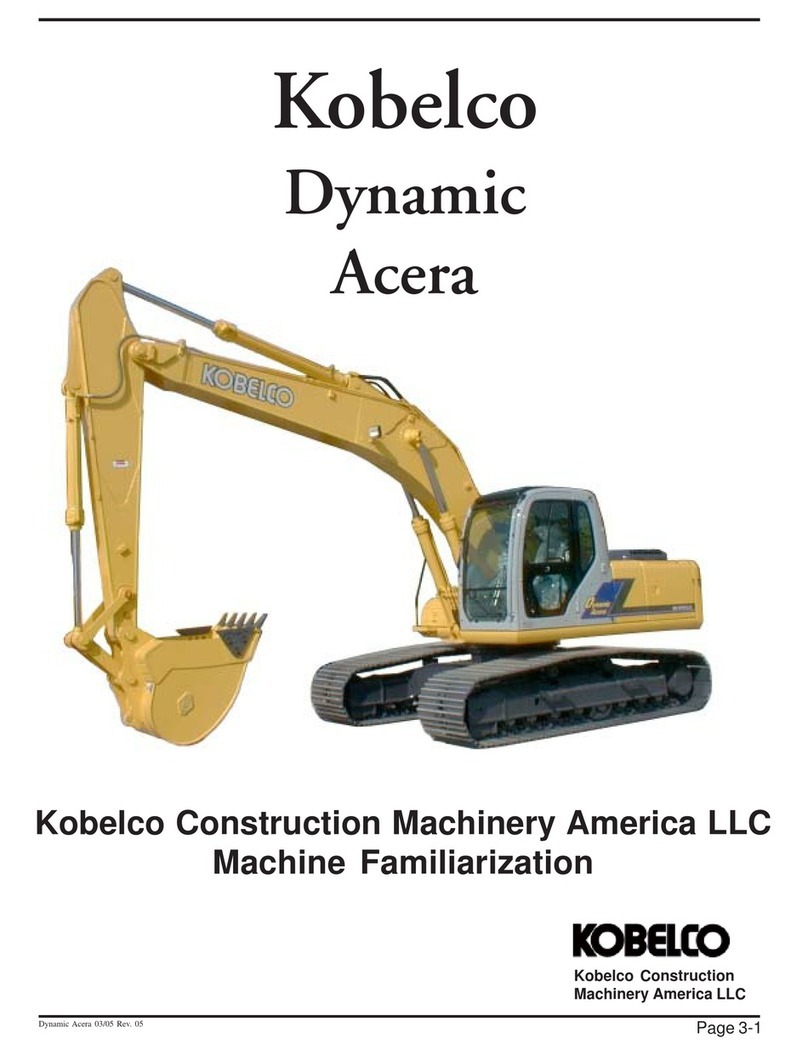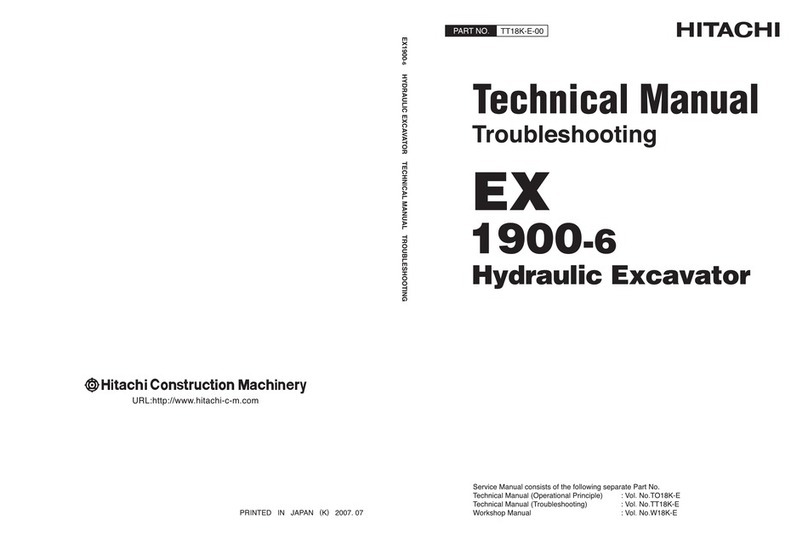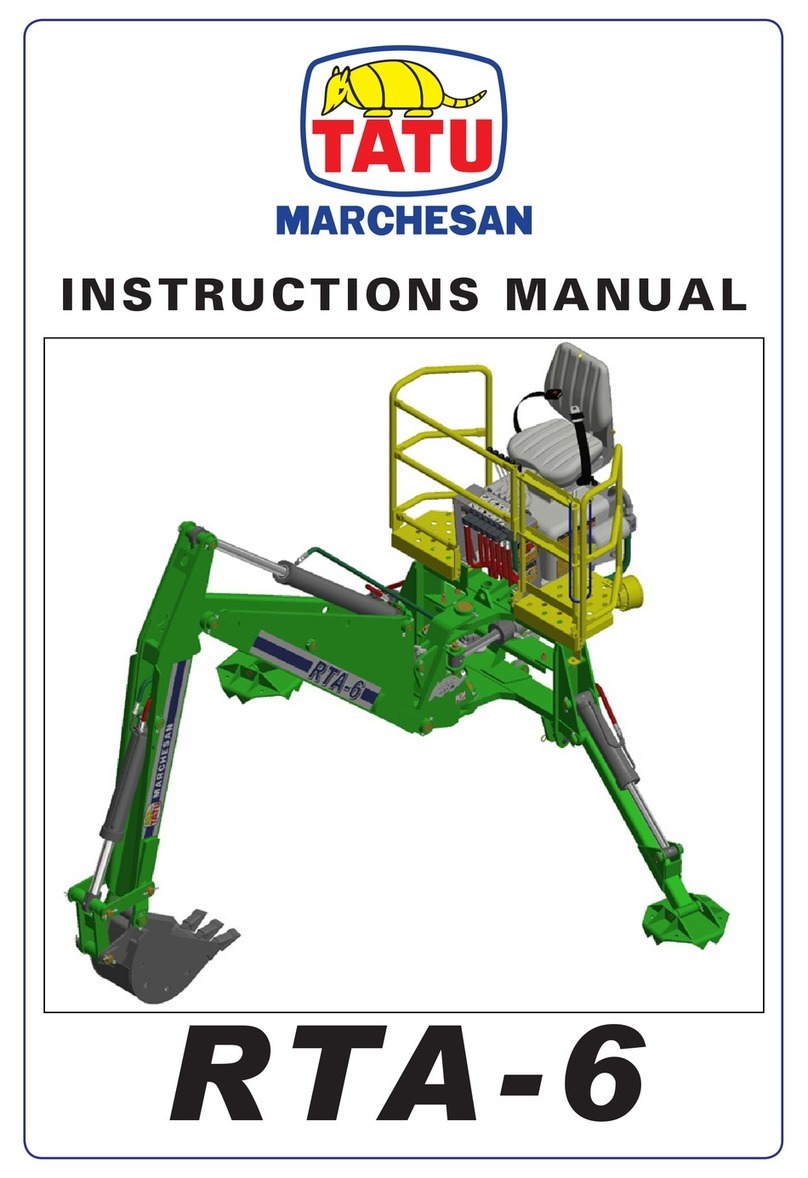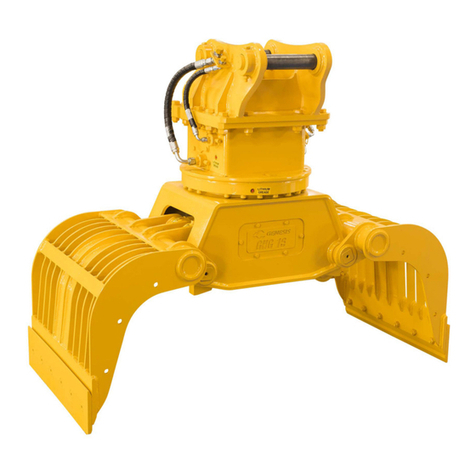
OPERATION & MAINTENANCE MANUAL SWE18UF
IV
2.3 MONITOR........................................................................................................................................................17
2.4 ROCKER SWITCH ..........................................................................................................................................18
2.5 START-UP SWITCH .......................................................................................................................................19
2.6 RADIO..............................................................................................................................................................19
2.7 SEAT.................................................................................................................................................................20
2.8 PILOT SAFETY LEVER..................................................................................................................................21
2.9 ENGINE ACCELERATOR SPEED CONTROL LEVER................................................................................22
2.10 PILOT OPERATION......................................................................................................................................22
2.11 AIR DUCT HOOD AND COVERING PARTS..............................................................................................24
2.12 DECALS.........................................................................................................................................................25
3. MACHINE OPERATION....................................................................................................................................26
3.1 MACHINE WORKING ENVIRONMENT......................................................................................................26
3.2 RUNNING-IN OPERATION ...........................................................................................................................26
3.3 OPERATING ENGINE ....................................................................................................................................27
3.3.1 Daily Inspection.........................................................................................................................................27
3.3.2 Diesel Engine Inspection...........................................................................................................................28
3.3.3 Electrical Device .......................................................................................................................................28
3.3.4 Air Filter....................................................................................................................................................28
3.3.5 Oil Level in Hydraulic Oil Tank ................................................................................................................28
3.3.6 Before Starting Engine...............................................................................................................................29
3.3.7 Starting Engine..........................................................................................................................................29
3.3.8 Start Engine in Cold Weather....................................................................................................................30
3.3.9 Adjusting Engine Rev.................................................................................................................................30
3.3.10 Stopping Engine.......................................................................................................................................30
3.3.11 Using Auxiliary Battery...........................................................................................................................31
3.4 TRAVEL CONTROL .......................................................................................................................................32
3.4.1 Control Travel with Pedal .........................................................................................................................32
3.4.2 Travel with Handle Control.......................................................................................................................33
3.4.3 Travel Speed ..............................................................................................................................................34
3.4.4 Travel Brake ..............................................................................................................................................34
3.4.5 Key Points of Travelling............................................................................................................................34
3.5 EXCAVATION ................................................................................................................................................37
3.5.1 Working Status...........................................................................................................................................37
3.5.2 Composite Movement of Excavator...........................................................................................................38
3.5.3 Slewing Platform Brake.............................................................................................................................38
3.5.4 Key Points for Excavation .........................................................................................................................38
3.5.5 Excavator Parking.....................................................................................................................................39
3.5.6 Operation on Swampy Ground..................................................................................................................41
3.5.7 Lifting One Side of Crawler by the Boom and Arm...................................................................................41
3.5.9 Operation in Water or Mud.......................................................................................................................42
3.5.10 Backhoe Operation..................................................................................................................................42
3.5.11 Leveling Operation..................................................................................................................................43
3.5.12 Preventing Collapse.................................................................................................................................43
3.5.13 Operation Tips.........................................................................................................................................43
